Honda’s new semi-automatic clutch makes its Malaysian debut on the updated CB650R and CBR650R. Truly game-changer for the motorcycle world.
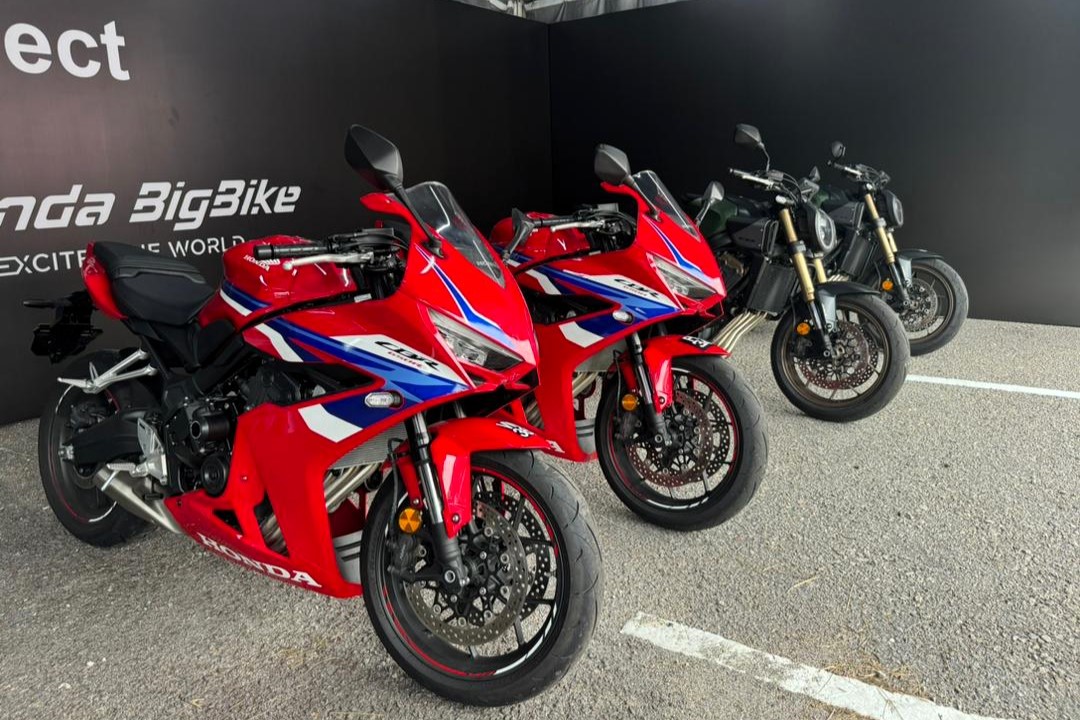
Subscribe to our Telegram channel for instant updates!
With the launch of the 2025 Honda CB650R naked sports and CBR650R sportbike, Malaysia finally gets a taste of the brand’s latest innovation: the E-Clutch. On paper, it promises easier riding by handling the clutch work for you, but how does it feel on the road?
Back at the Malaysia Autoshow 2025 in MAEPS Serdang, me and my colleague Roy had the chance to test ride both bikes. I hopped on the fully-faired CBR650R, while Roy took the naked CB650R. And let’s just say, the first time you ride with an E-Clutch, it feels… very strange.
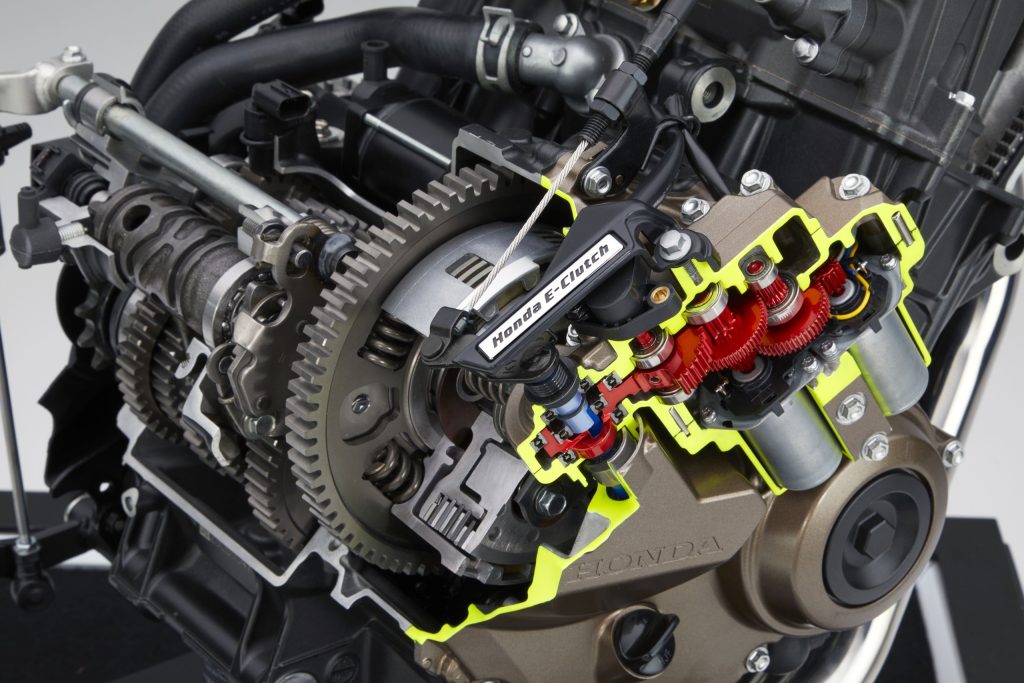
What is Honda E-Clutch?
Think of it as a robotic clutch. The E-Clutch uses a servo-actuated mechanism connected to a standard multi-plate clutch and gearbox. In practice, you just snick the bike into gear, twist the throttle, and ride off without ever touching the clutch lever. No stalling, no jerks, no drama. Just like riding your Kapchai Honda Ekspai (EX-5).
The system was over a decade in development, and it’s smart enough to let you ride however you like. Want to use the clutch lever manually? Pull it in and it behaves like a normal bike. Prefer the tech to do everything? Just leave it, and it automatically takes care of every gear change. Don’t like it at all? You can turn it off completely and ride the old-school way. And if the system ever fails, it defaults to manual mode so you’re never stranded. Well, pretty clever.
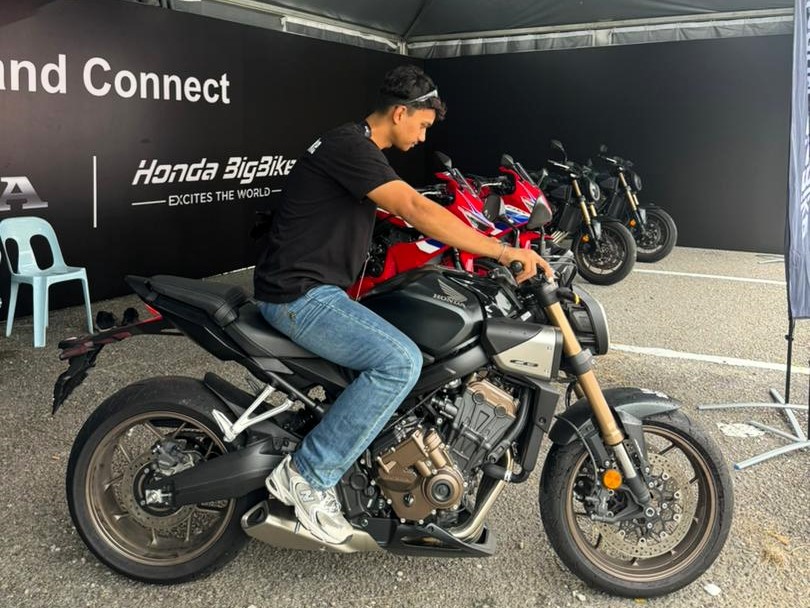
On the Road: First Impressions
Starting out is the weirdest part. Picture this: you fire up the bike, slot it into first gear without touching the clutch, and it just sits there waiting for throttle. Your instincts scream that the bike should lurch forward and stall, but it doesn’t. Twist the throttle, and you roll off smoothly like you’re on a big scooter.
We managed to squeeze in a few laps on the test route, though I’ll admit my brain and left hand felt a little on edge at first, my fingers were instinctively hovering over the clutch, ready to react if anything went wrong. But honestly, there was no need. This is exactly where the E-Clutch proves its worth: at traffic lights. Launches are almost effortless, just twist the throttle, snick through the gears, and off you go. No clutch juggling, no hesitation. It delivers the kind of ease you’d expect from a scooter, but with the raw thrill of a screaming inline-four backing it up.
The CB650R and CBR650R both carry the same LAMs-restricted inline-four, tuned for strong low- to mid-range torque. With the E-Clutch, that grunty bottom end feels even more usable. In practice, you get smooth, punchy acceleration up to around 6,000 rpm before it starts to flatten out.
Shifts are generally crisp, especially on the upshifts. Downshifts can feel a little rougher unless you give it a blip, but the bike’s dash lets you tune the shift feel between Hard, Medium, and Smooth settings, which is a neat touch.
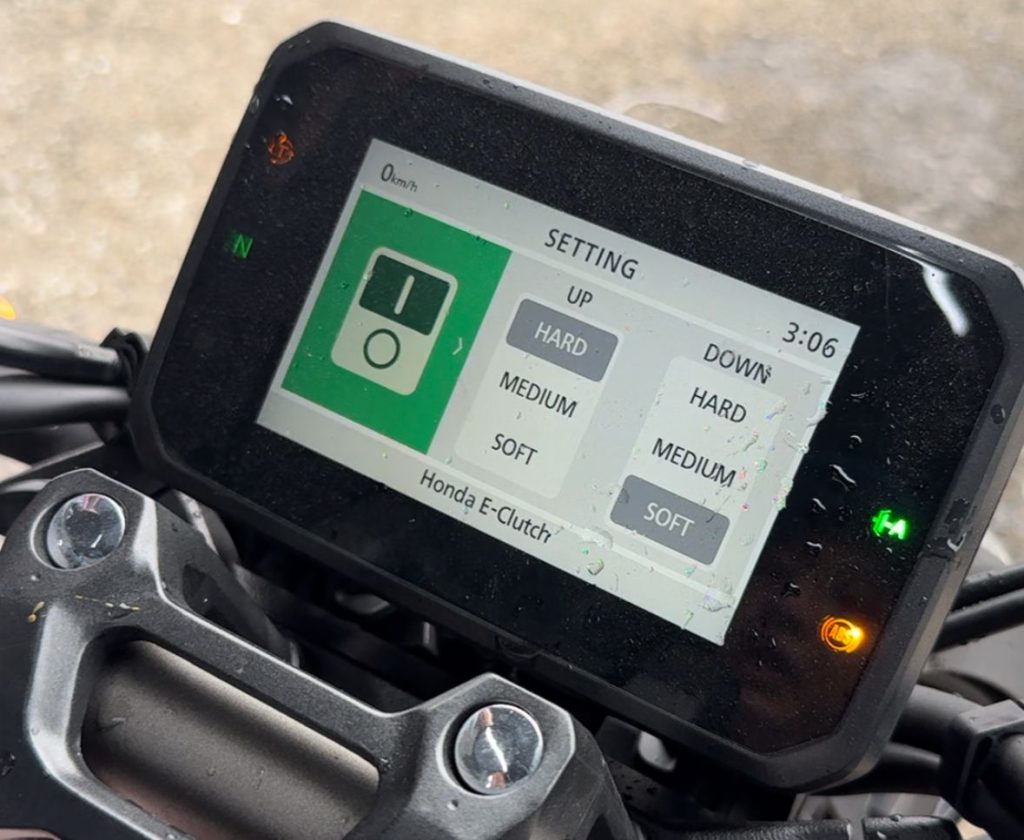
Learning Curve
It does take a few minutes to rewire your brain. Riders who’ve spent years manually slipping clutches might find it unsettling at first. But once you relax into it, you start appreciating the flexibility.
The beauty of E-Clutch is that it adapts to whatever you’re doing. If you’re lazy, it’ll handle everything. If you’re in the mood to ride like normal, pull the clutch lever and it responds like a regular bike. It’s the best of both worlds.
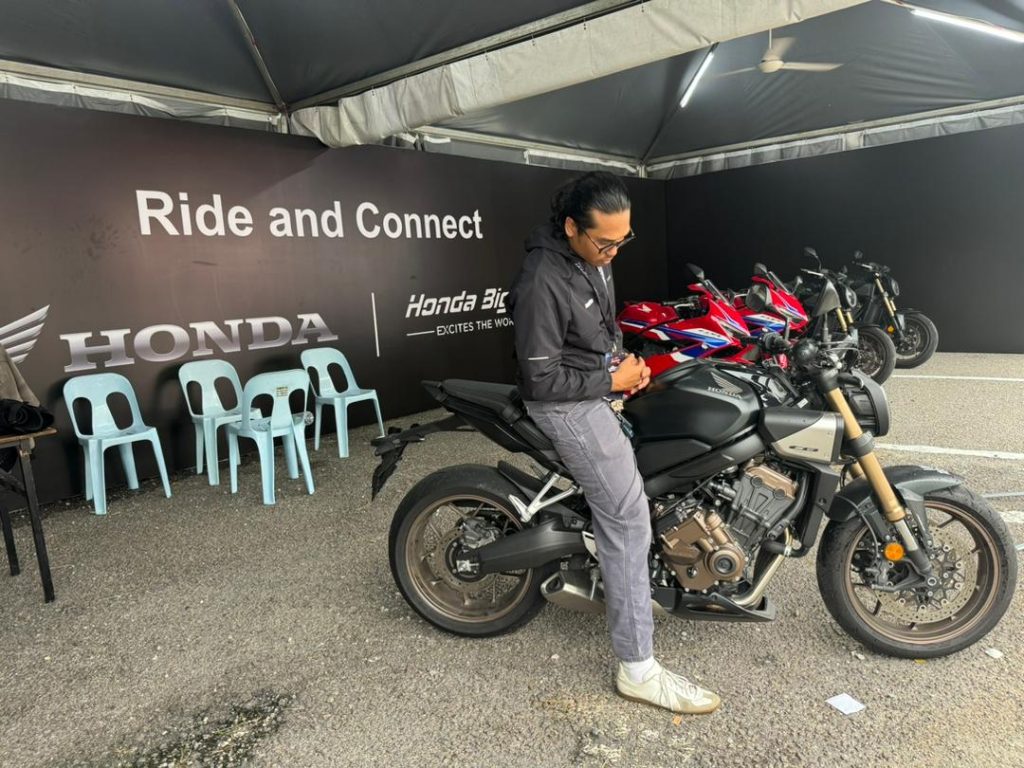
Everyday Usability
In my view, the E-Clutch truly shines in urban environments. Riding through stop-and-go traffic, executing U-turns, or filtering through tight city lanes feels noticeably less demanding since you’re no longer constantly feathering the clutch. On top of that, stalling the engine is simply not possible, a huge advantage for beginners, and even for riders who might feel intimidated by managing a heavier motorcycle.
Even if you mistakenly try to set off in a higher gear, the system automatically modulates clutch slip to get the bike moving. That said, the dash will flash a downshift prompt, reminding you to select the right gear, because relying on clutch slip too often could accelerate wear over the long term.
For seasoned riders, the system might initially seem unnecessary or even intrusive. But the more you ride, the more natural it becomes, and before long it feels almost addictive, especially when launching hard from a stoplight or blasting away in traffic.

The Bigger Picture
Honda isn’t new to automating motorcycles. From the legendary Super Cub’s auto-clutch in the 1950s, to the Hondamatic, V-Matic scooters, and the Dual Clutch Transmission (DCT) we see today on the Africa Twin, Gold Wing, and Rebel 1100, this has always been part of Honda’s DNA.
Compared to DCT, the E-Clutch is lighter, simpler, and keeps the traditional gearbox feel intact. It only adds about 2kg to the bike’s weight, and both the CB650R and CBR650R retain the same price as the previous year’s models despite the tech upgrade. Alongside that, you also get a new 5-inch TFT dash, backlit controls, and full LED lighting.
Thinking about it now, even without the E-Clutch, these bikes would have no problem winning over riders everywhere not only Europe and that’s just what Honda’s middleweight 650s do. Every generation has been a hit, and this one is no different. The sportier CBR650R can be an absolute beast when you want it to be, while the CB650R brings that retro-naked charm that never gets old.
They’ve always been versatile, dependable machines that punch above their weight. But with the E-Clutch added into the mix, Honda isn’t just refining the formula, it’s pointing to where the future of motorcycling might be heading.
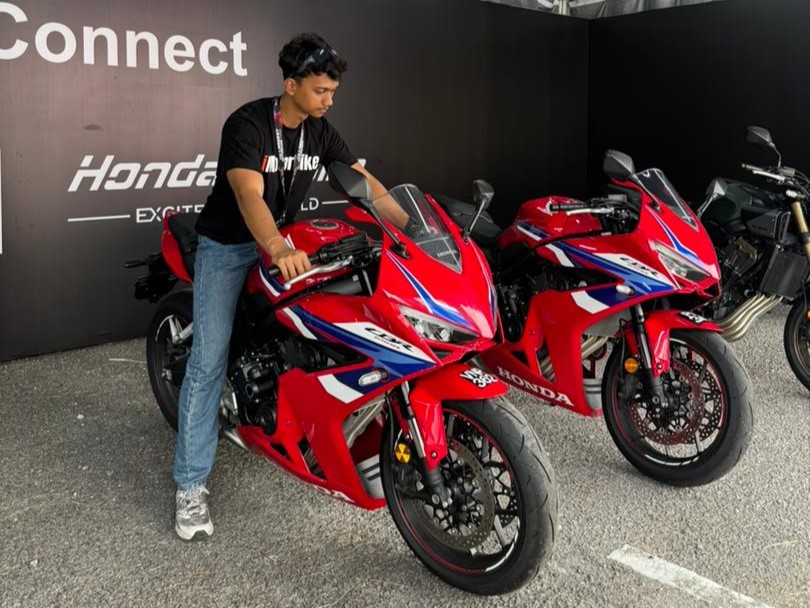
Verdict
So, is the E-Clutch a gimmick or a genuine step forward? Honestly, it’s both. Purists will scoff at the idea of a clutch that “thinks for you.” But spend some time in city traffic, and you’ll quickly understand its appeal.
Well after all, for new riders, it makes big-bike life less intimidating. For experienced ones, it offers the option of convenience without taking away control. And the fact you can turn it off anytime is genius.
The CB650R and CBR650R were already solid middleweight choices. With the E-Clutch, they become even more versatile. Whether you see it as the future of motorcycling or just a neat extra, there’s no denying it makes riding easier and, in many ways, more fun.
2025 Honda CBR650R and CB650R Specifications
ENGINE
- Type: Inline-4 canted forward 30 degrees
- Displacement: 649cc
- Bore x stroke: 67.0 x 46.0mm
- Compression ratio: 11.6:1
- Valvetrain: DOHC; 4 vpc
- Fueling: EFI w/ 32mm throttle bodies
- Transmission: 6-speed
- Clutch: Wet multiplate w/ automatic E-Clutch and assist-and-slipper functions
- Final drive: 525 chain
CHASSIS
- Frame: Twin-spar steel
- Front suspension; travel: Fully adjustable Showa SFF-BP 41mm inverted fork; 4.7 inches
- Rear suspension; travel: Spring-preload adjustable Showa shock; 5.1 inches
- Front tire: 120/70 x 17
- Rear tire: 180/55 x 17
- Front brakes: 310mm floating discs w/ radially mounted 4-piston Nissin calipers
- Rear brake: 240mm disc w/ single-piston Nissin caliper
- ABS: 2-channel standard
DIMENSIONS and CAPACITIES
- Wheelbase: 57.0 inches
- Rake: 25.5 degrees
- Trail: 4.0 inches
- Seat height: 31.9 inches
- Fuel capacity: 4.1 gallons
- Curb weight: CBR 650R 211kg / CB650R 207 kg












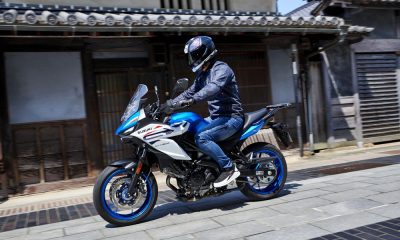
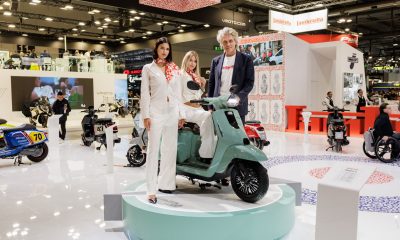

















Facebook
Instagram
X (Twitter)
YouTube
LinkedIn
RSS